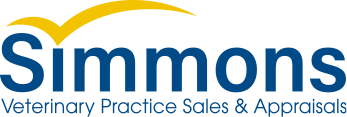By: Nikki Nitz, CPA CMA –
There is a lot of information circulating about No-Lo practices. But how about we flip the coin and talk about highly profitable practices? You would think that there should be no issue with having a higher profit percentage correct? Well, think again.
A No-Lo practice is one that has little or no profits. These types of practices usually sell for liquidation value, in other words, the value of the tangible assets: inventory and equipment at used prices. The seller may receive a little additional sales proceeds for the going-concern value meaning the clientele coming through the door and revenues being produced. Unfortunately, we see a fair number of these No-Lo practices.
On the other hand, we also see highly profitable practices. Practices that are very well managed and have profit percentages of 20% or more. The owner has been diligent about the financial health of the practice and should be rewarded for his/her efforts. They deserve it, right?
Here comes the issue…
Traditional lenders start to squirm if a practice is priced over one year’s gross revenues. They have a glass ceiling on the market. All focus is on cash flow in determining the price of a practice UNTIL the price surpasses one year’s gross revenue. Then all of a sudden the determining factor shifts to gross revenue versus cash flow. This makes no sense to me!
In the lender’s defense, it is not entirely their fault. Banks are heavily regulated by our government. Practices that are more than 20% profitable start hitting this glass ceiling when it comes time to sell. So a practice owner managing his/her practice extremely well gets punched in the gut at the time of sale. Is this fair to the seller? In my opinion, NO!
Practices that are 20% profitable are likely going to have a capitalization rate of 20% or less which equates to a multiple of 5 or more. A practice that is 20% profitable with a multiple of 5 values at 100% of gross.
This is a very well-managed practice. What happens when a practice is even more profitable than this?
Example: practice is grossing $1,500,000 and is 23% profitable and has a capitalization rate of 20% (multiple of 5).
As you can see, this practice value comes in much over one year’s gross revenues. Should the seller be penalized for managing a highly profitable practice because the lenders have a glass ceiling? I don’t think so. It’s almost like there is little incentive to be more than 20% profitable. Sounds like some of our government taxing structures doesn’t it?!?! I’ll digress. There are options for you highly profitable owners so keep reading.
From the lender’s perspective, they have to analyze risk. They have to consider if the buyer can manage the practice as well as the current owner and maintain this level of profitability.
What are some of the options for selling these highly profitable practices?
The lender may opt to finance up to one year’s gross revenues (occasionally they will stretch a little beyond) and the seller may be asked to carry some of the risks in the form of a carry-back note. This means the seller will finance the purchase price above and beyond what the lender will finance.
Selling to a corporation is an option. Corporations fund their own transactions, therefore, bypassing the glass ceiling of the traditional lenders. This may be a good option for the highly profitable seller to obtain a fair market price for the practice. However, most corporations want to keep the seller employed for an extended period of time after the sale. If you are looking to retire and be done working at the point of sale this may not be a good option for you.
Another option that I believe we are going to start seeing more of in our industry is private investors. Veterinary loans have traditionally been a very low risk of default. Investors have caught word of this. There are the states that do not allow for non-veterinary ownership but clearly, there is a legal workaround because the corporations are making it happen. Just as the corporations, the private investors do not have the government regulations to adhere to and therefore have more flexibility in lending.
I have great working relationships with several of the veterinary lenders and am very grateful for this. I have had this very conversation with many of them. This glass ceiling is going to prevent traditional lending on these highly profitable practices and these lenders are going to be missing out on great opportunities.
For you highly profitable sellers, you have options. You have worked hard all these years at managing your practice well. You deserve to be rewarded for your efforts! Your practice is NOT too profitable!



